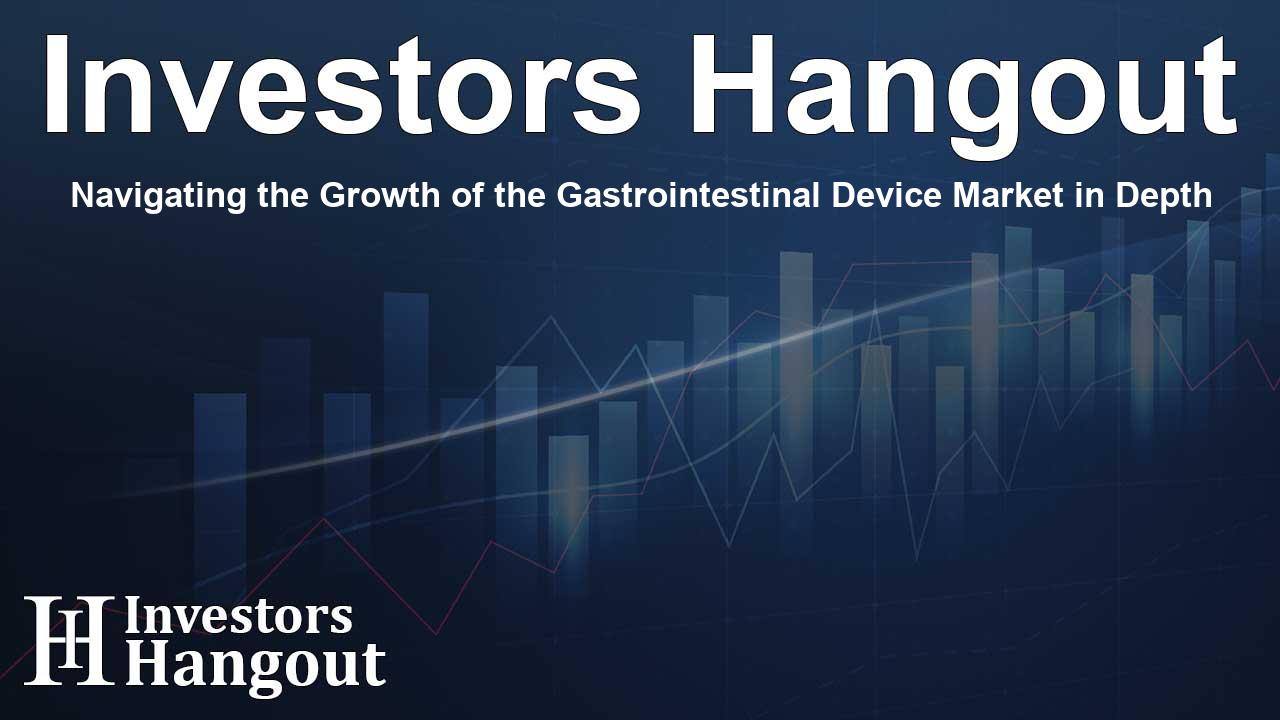Navigating the Growth of the Gastrointestinal Device Market in Depth

Understanding the Gastrointestinal Endoscopic Devices Market Growth
The gastrointestinal endoscopic devices market is experiencing remarkable growth, projected to surge from USD 10.78 billion in 2023 to USD 16.84 billion by 2032. This upward trajectory, anticipated at a compound annual growth rate (CAGR) of 5.11% during the forecast period from 2024 to 2032, highlights a significant shift in the medical landscape driven by advanced technologies and rising gastrointestinal disorders globally.
Key Factors Propelling Market Growth
Several critical factors are fueling the growth of the gastrointestinal endoscopic devices market. The rising preference for minimally invasive procedures has reshaped patient care, offering quicker recovery times, reduced surgical risks, and shorter hospital stays. These benefits contribute to the burgeoning demand for advanced diagnostic and therapeutic endoscopic devices as healthcare providers aim for enhanced patient outcomes.
Technological Innovations Driving the Industry
Technological advancements play a pivotal role in enhancing the efficiency and effectiveness of endoscopic instruments. Innovations such as artificial intelligence and robotic-assisted endoscopy are revolutionizing procedures, ensuring greater accuracy and safety during complex diagnostics and treatments. This trend reflects a growing commitment to improving healthcare quality and patient satisfaction.
Market Leaders and Their Innovations
The market showcases several key players driving innovation and quality improvement. Companies such as Olympus Corporation, Boston Scientific Corporation, and Medtronic are at the forefront, developing cutting-edge devices like the EVIS X1 Endoscopy System and SpyGlass DS Direct Visualization System. These products not only demonstrate excellence in performance but also underscore the commitment to patient safety and care quality.
Market Segment Analysis
The gastrointestinal endoscopic devices market can be segmented by type and end use. By type, flexible gastrointestinal endoscopes dominate the market, accounting for a substantial share due to their versatility in diagnosing gastrointestinal diseases. Additionally, disposable endoscopes are witnessing rapid growth, driven by the focus on infection control and safety in medical environments.
End Use Trends in the Market
Facilities that cater to outpatient services are leading in terms of end-use market share, reflecting a significant trend toward providing affordable and efficient healthcare solutions. As healthcare continues to evolve, outpatient facilities equipped with advanced endoscopic technologies are becoming crucial in meeting patient demands while alleviating the pressure on traditional hospital settings.
Regional Insights and Market Dynamics
Regionally, North America leads the global market for gastrointestinal endoscopic devices, holding a considerable revenue share thanks to its robust healthcare infrastructure and proactive adoption of new technologies. Conversely, the Asia-Pacific region is poised for remarkable growth, driven by increasing healthcare expenditures and awareness surrounding gastrointestinal health among the aging population.
Recent Developments Shaping the Future
The landscape of gastrointestinal endoscopic devices continues to evolve with recent developments. Noteworthy advancements include the introduction of state-of-the-art devices by leading companies, which significantly enhance procedural capabilities. For instance, Boston Scientific launched the EXALT Model D, a revolutionary single-use duodenoscope validated by regulatory bodies for safety and efficiency. Such innovations are crucial in addressing infection risks associated with reusable devices, further pushing market growth.
Conclusion
In conclusion, the gastrointestinal endoscopic devices market is on a dynamic growth path driven by technological advancements and the increasing prevalence of gastrointestinal disorders. As healthcare systems adapt to new challenges, the focus on innovation, safety, and patient-centric solutions will undoubtedly shape the future landscape of endoscopic procedures.
Frequently Asked Questions
What is the current market size of gastrointestinal endoscopic devices?
The market was valued at USD 10.78 billion in 2023 and is projected to reach USD 16.84 billion by 2032.
What factors are driving the growth of this market?
Key drivers include technological advancements, increased incidence of gastrointestinal disorders, and the rising demand for minimally invasive procedures.
Who are the major players in the gastrointestinal device market?
Major players include Olympus Corporation, Boston Scientific Corporation, Medtronic, and Johnson & Johnson Services, Inc.
What segments are covered in the market analysis?
The market is segmented by type (flexible and disposable endoscopes) and by end use (hospitals and outpatient facilities).
Which region holds the largest market share?
North America currently dominates the market, but the Asia-Pacific region is expected to witness the highest growth.
About The Author
Contact Logan Wright privately here. Or send an email with ATTN: Logan Wright as the subject to contact@investorshangout.com.
About Investors Hangout
Investors Hangout is a leading online stock forum for financial discussion and learning, offering a wide range of free tools and resources. It draws in traders of all levels, who exchange market knowledge, investigate trading tactics, and keep an eye on industry developments in real time. Featuring financial articles, stock message boards, quotes, charts, company profiles, and live news updates. Through cooperative learning and a wealth of informational resources, it helps users from novices creating their first portfolios to experts honing their techniques. Join Investors Hangout today: https://investorshangout.com/
The content of this article is based on factual, publicly available information and does not represent legal, financial, or investment advice. Investors Hangout does not offer financial advice, and the author is not a licensed financial advisor. Consult a qualified advisor before making any financial or investment decisions based on this article. This article should not be considered advice to purchase, sell, or hold any securities or other investments. If any of the material provided here is inaccurate, please contact us for corrections.
